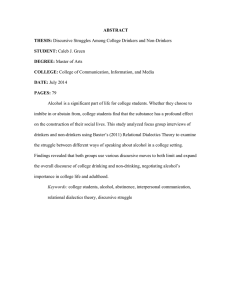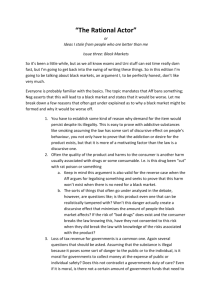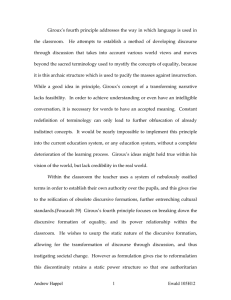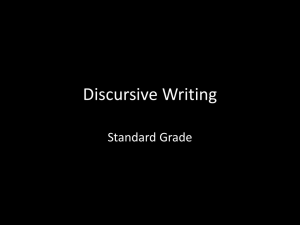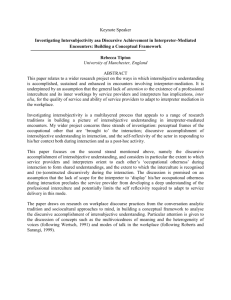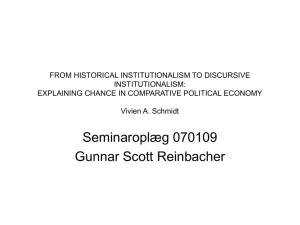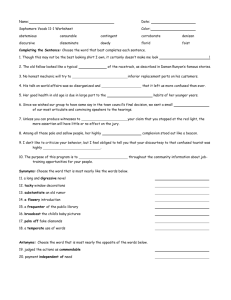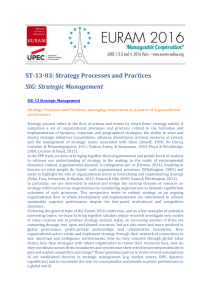U.S. Environmental Movements - Environment
advertisement
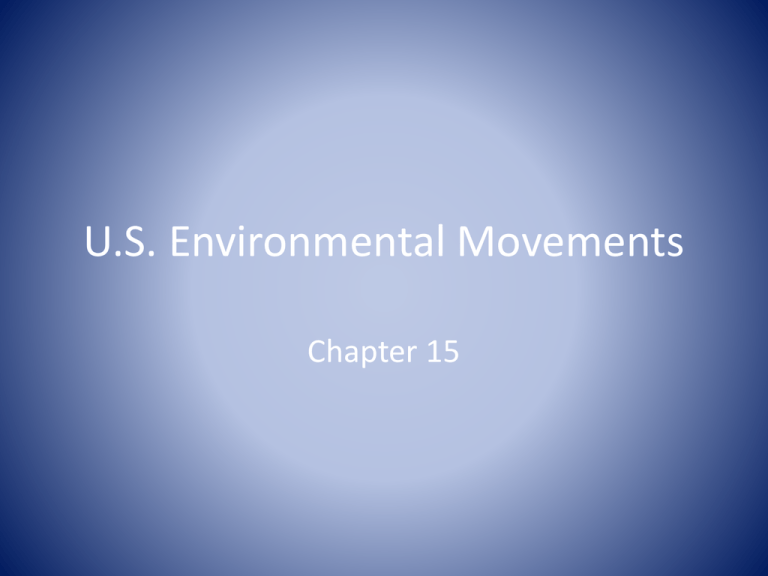
U.S. Environmental Movements Chapter 15 U.S. Environmental Movements • The U.S. environmental movement is perhaps the single largest social movement in the United States. • With over 6,500 national and 20,000 local environmental organizations, along with an estimated 20-30 million members, this movement dwarfs other modern social movements such as the civil rights or peace movements. • Oldest social movement in U.S. How can we Examine this Social Movement • Three commonly used approaches 1. Discourse Analysis: examine the belief systems that define various components of this social movement 2. Historical Analysis: examine the development of the social movement over time 3. Resource Mobilization Analysis: examine the techniques used to garner financial resources for the organization. Discourse Analysis • View the movement as a group of distinct communities, each based on a particular worldview (discursive frame). • A Discursive frame is the set of cultural viewpoints that inform the practices of a community of social movement organizations. • Each discursive frame provides a cultural viewpoint from which the environmental organization acts. • The discursive frame defines the goals and purposes of the organizations and provides guidance for the actions of the organization. Distribution by Discursive Frames of the U.S. Environmental Movement Reform Environmentalism (32%) Environmental Justice (5%) Anti/Globalization/Green (2%) Wildlife Management (4%) Ecotheology (2%) Preservation (30%) Environmental Health (4%) Conservation (18%) Deep Ecology (2%) Ecofeminism (1%) Historical Development of the U.S. Environmental Movement • Substantial increase in the number of organizations founded starting in the mid-1950s up until around 1967. • This was followed by explosive growth in 19681970, and in 1988-1990. • Discursive Frame of preservation and conservation/wildlife management were dominant until the end of the 1930s. In the 1940s, there was a significant rise in the number of alternative discursive organizations. Economic Resource Mobilization • 50% of the funding of the environmental movement is under the control of the organizations with a preservationist frame (The Nature Conservancy, a land trust organization, receives nearly 19%). • Three mainstream discursive frames of reform environmentalism, wildlife management, and conservation range between 20.4% to 12.2%. • The “alternative discourses” combined total less than 5%. Questions • What are the key differences between the discursive frames of Conservation, Preservation, Reform, Enviro Justice (& Enviro Health), Ecofeminism ? • Why might Preservationist organizations (especially as opposed to “alternative discourses”) have the most funding? • Why might a Preservationist oppose hydro, wind or solar power generation? • What discursive frames will gain influence and which will dominate in the future do you think? Why? • To which frame(s) do you most associate / think is most useful, “right” or important? Why?
